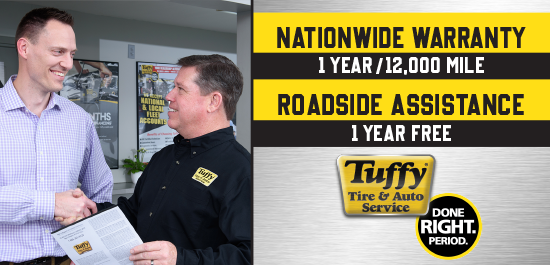| They are your vehicle's only connection to the road, yet most of the time your tires are the last thing you think about. Despite being viewed by many drivers as simply round and black, today's tires are more technologically advanced than ever before. As the technology in tires rapidly advances, so do consumers' options to choose the right tires to meet their vehicle needs. Vehicle manufacturers carefully outfit their cars and trucks with particular tires that best suit each vehicle's purpose and performance. When those original tires wear out and it is time to shop for replacement tires, there are a few important steps you should take. Know Your Size Check the existing sidewalls and write down the numbers you find there, especially your existing tire size. All four tires should be replaced with ones that are the same size, according to the Rubber Manufacturers Association. However, there are times when a vehicle manufacturer requires different sizes for the front and rear axles, so be sure to check your vehicle owner's manual. Consider Driving Conditions An all-season tire would probably be the right choice for a climate that experiences dry and regular wet conditions, along with light to moderate snowfall. Seasonally, winter tires make sense for those who live in areas that regularly get heavy snowfall or extended periods of icing or wintery mix conditions. Know What You Want Do you want the quiet comfort of a luxury all-season tire? Increased puncture resistance and extreme off-road traction for rock crawling? Or is it all-season performance and increased fuel economy? Thanks to recent technological advances, today's tires can give vehicles an extra edge in all these areas. Consider Cost You paid a lot for the technological advancements designed into your vehicle, from traction control to stability control or a sport suspension, but your tires are the only things translating those benefits to the road; if they aren't up to the task, you won't get the full benefit from your investment. Match Needs With Tires The outside of a tire can show a lot about its performance attributes. For example, large, aggressive-looking lugs with big spaces in between are generally good for off-road traction. Deep sweeping channels help evacuate water and slush from a tire to enhance traction. Many small "sipes" in a tire help create additional biting edges to enhance all-season traction. An asymmetrical tread optimizes traction characteristics across the face of the tire, so the outside can optimize cornering grip, while the middle or inside provides stability and traction. What's On The Inside? Today's tires feature many specialized compounds and high-tech construction techniques that give them performance attributes. Examples include unique materials such as volcanic ash for icy conditions, and reinforcements such as carbon fiber and Kevlar, which can give sidewalls extra toughness, or dampen sounds and vibrations. For more helpful information on tires or advice on selecting the proper tire for cars, light trucks, SUVs and more, visit your local Tuffy Tire & Auto Service Center . |
Tuffy
Menu




